Breathwork for Recovery: Unlocking the Power of Parasympathetic Activation
Discover how slow, intentional breathing activates the parasympathetic nervous system, boosts HRV, improves CO₂ tolerance, and accelerates recovery from stress or exercise.

Breathwork isn’t just another wellness fad - it’s gaining real traction because it works on more than one level. When you use your breath intentionally, you’re not just “calming down.” You’re working directly with the core systems that decide whether your body is in stress mode or recovery mode.
At the center of it all is your autonomic nervous system. This system is always working in the background, flipping the switch between fight-or-flight and rest-and-repair. Breathwork gives you a way to influence that switch, and the science is finally catching up.
In this post, I’ll break down what the latest research actually says: how breathwork shifts your nervous system, helps boost heart rate variability (HRV), raises your CO₂ tolerance, and speeds up recovery - whether you’re bouncing back from a workout or a tough week.
Let’s get practical and see how this actually works in real life.
🧠 The Science of Breathwork and Recovery
The autonomic nervous system (ANS) has two branches:
- Sympathetic: fight or flight
- Parasympathetic: rest and recover
Breathwork, especially slow breathing, has been shown to activate the parasympathetic branch, shifting the body into a state of recovery [28]. This is reflected in increased HRV, a key marker of nervous system flexibility and recovery readiness.
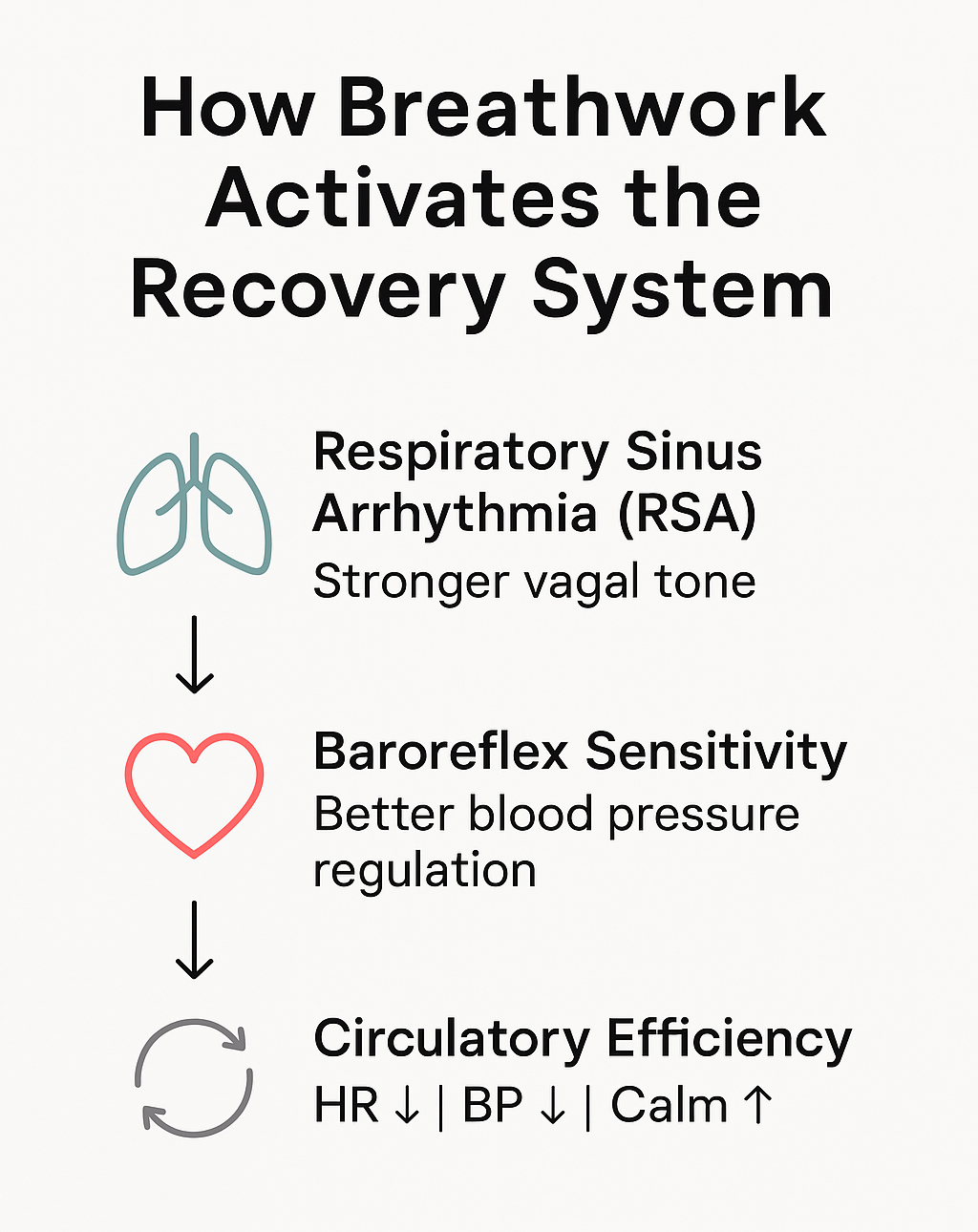
🔬 Key Mechanisms: How Breathwork Activates Recovery Mode
Two core feedback loops are affected by breathing patterns:
- Respiratory Sinus Arrhythmia (RSA): Heart rate changes with each breath. Slower breathing = stronger RSA = more vagal tone [29].
- Arterial Baroreflex: Helps regulate blood pressure; enhanced through slow, steady breathing [29].
The result? Enhanced circulatory efficiency, lower heart rate, and reduced blood pressure — all signs of parasympathetic activation [30].
🧪 CO₂ Tolerance: The Breath-Hold Advantage
CO₂ isn’t just waste gas — it's a training signal. Research shows that higher CO₂ tolerance is linked to improved parasympathetic function, stress resilience, and performance [31]. Protocols like breath-hold ladders and slow nasal breathing help improve this tolerance.
⚠️ Breathwork Isn’t Always Easy: Anxiety & Safety
Some individuals experience increased anxiety during breathwork, especially if they have trauma histories or are sensitive to bodily sensations. This is due to interoceptive sensitivity — being hyper-aware of internal shifts like heart rate or breath changes [35].
Adverse responses can include:
- Lightheadedness
- Panic
- Chest tightness
These effects can be mitigated through progressive protocols and trauma-informed techniques [32].
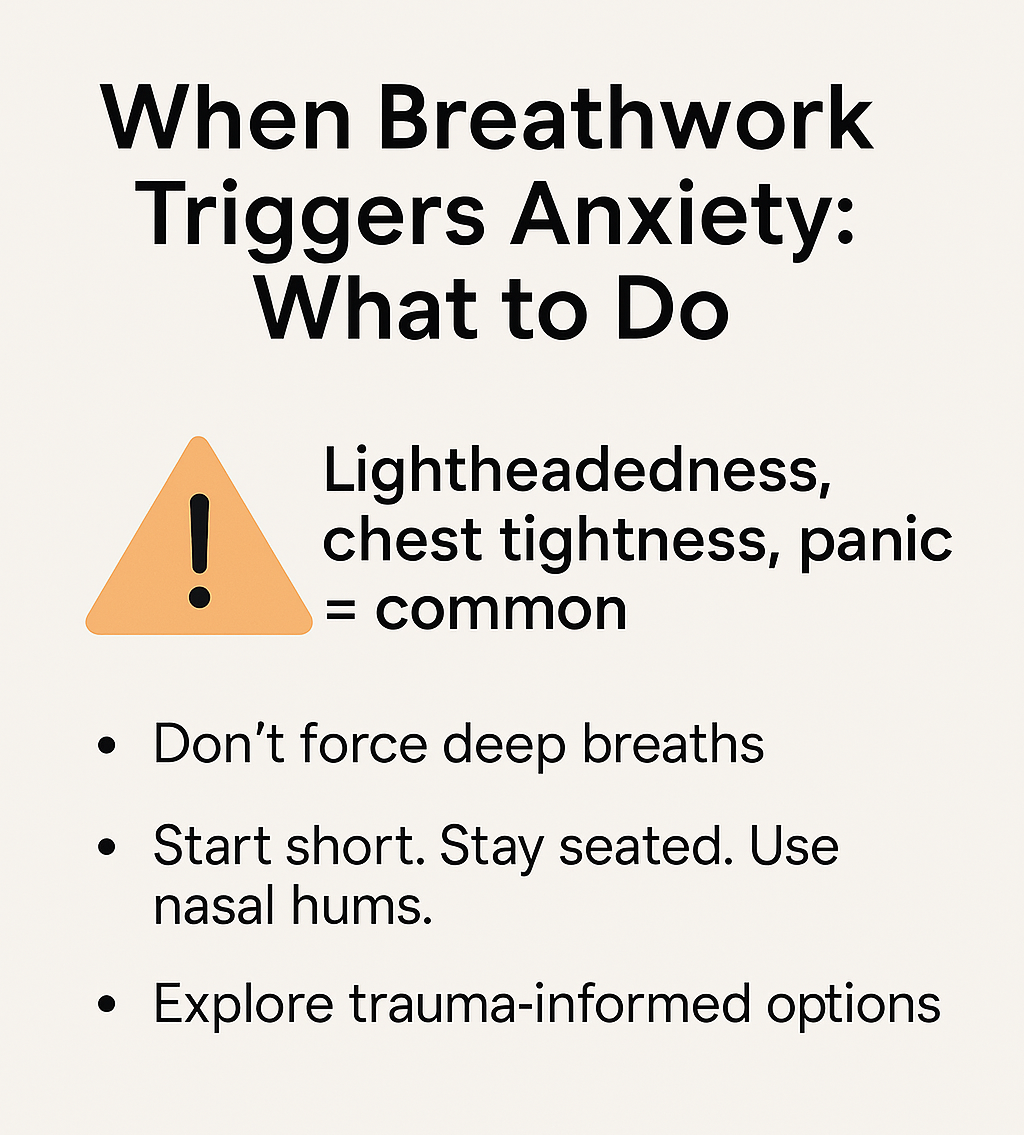
✅ Practical Applications
For Athletes:
- Use 6 breaths/min post-workout to speed recovery
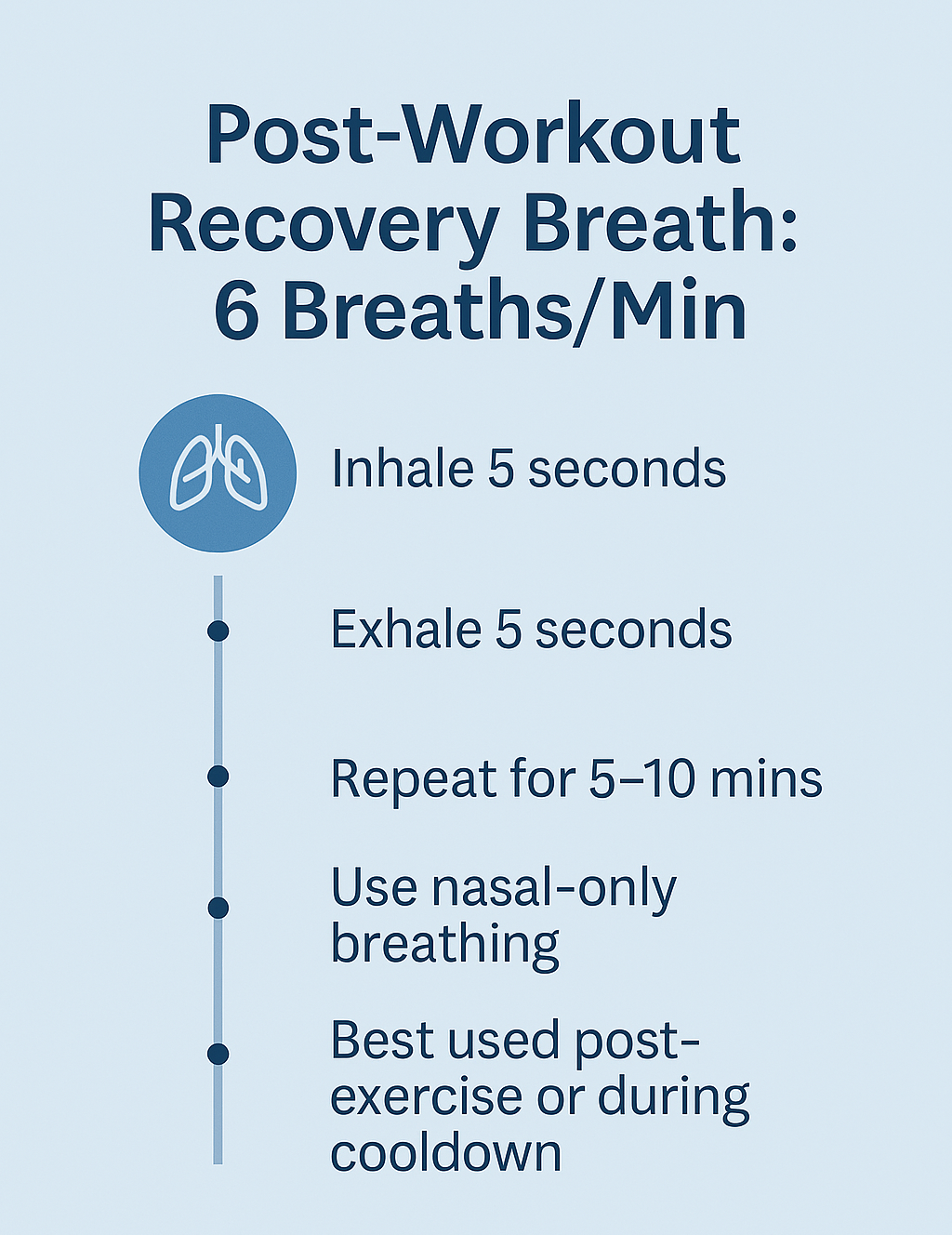
For Stress Management:
- Try 4-7-8 breathing for nervous system reset between sets
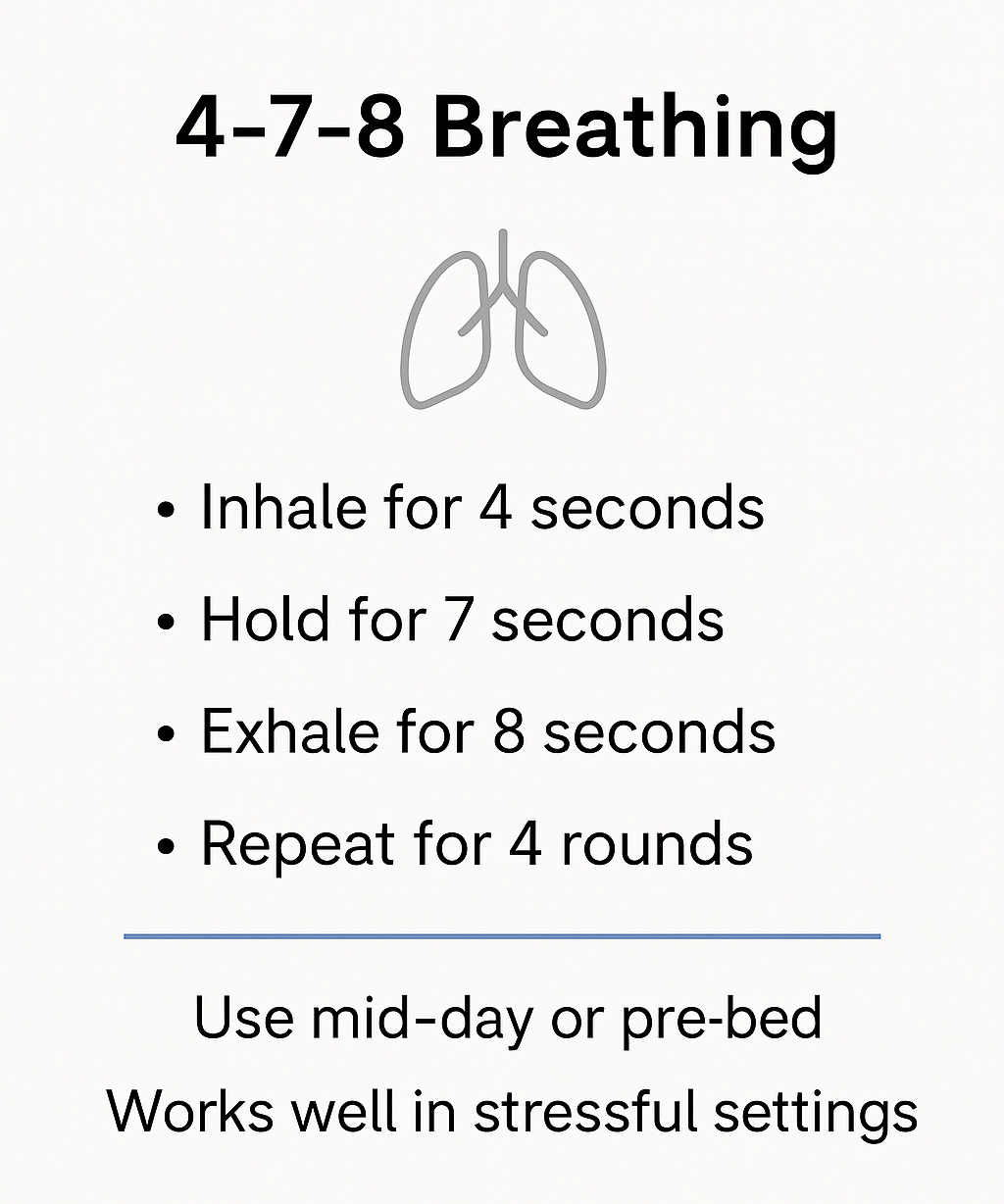
General Tips:
- Start with 5–10 minutes/day
- Track HRV (Whoop, Oura, etc.)
- Stay consistent — effects build over time
One study on HRV and stress management found that regular breathwork protocols significantly improved emotional regulation and recovery outcomes over time [34].
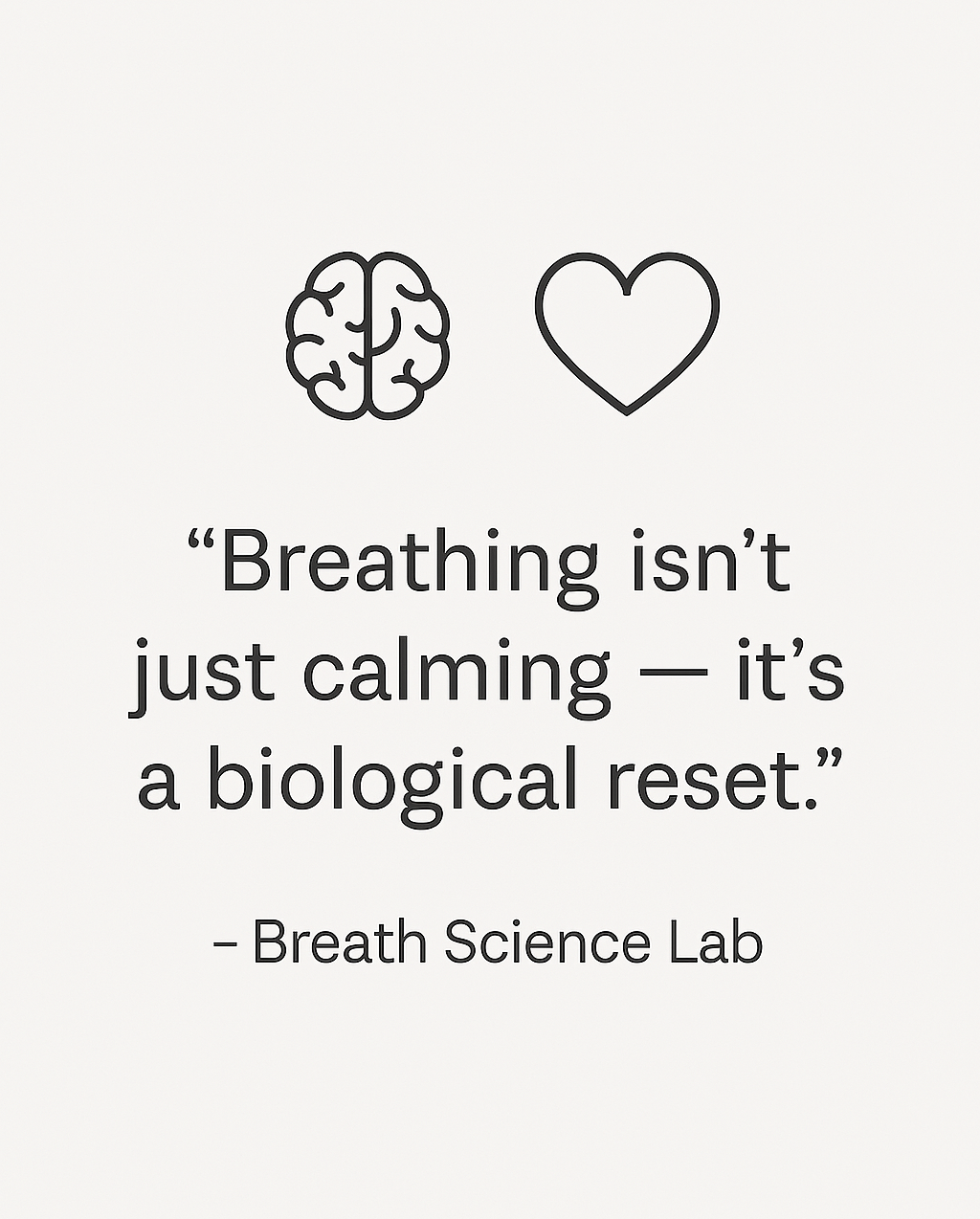
📂 References
[28] https://www.ncbi.nlm.nih.gov/pmc/articles/PMC9656115
[29]https://www.semanticscholar.org/paper/6dcb835259aab9a92d9052c930021b165e703690
[30] https://www.ncbi.nlm.nih.gov/pmc/articles/PMC11307190
[31]https://www.semanticscholar.org/paper/2bd149e719246c1a9a765b70666d151fd9c2256a
[32]https://www.semanticscholar.org/paper/d60711ad6faea946f48130f8bc6b1b29048aa70e
[34]https://www.semanticscholar.org/paper/1b29a81ae262aa9b473bbf1a2f410916e72f39d2
[35] https://www.ncbi.nlm.nih.gov/pmc/articles/PMC10869395

